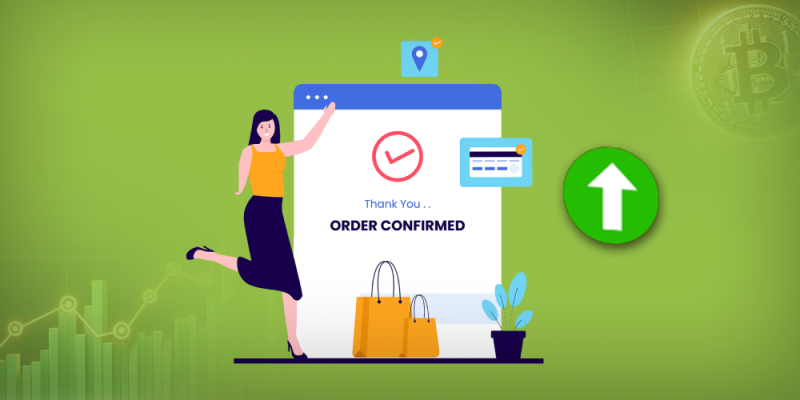Table of Contents
ToggleGetting Cart Abandonment Solutions is Proactive engagement—is the first step to bring a significant lead into your funnel
An abandoned cart is a denied sale and for various reasons, it can be an alarming sign of untrusting customers. However, don’t fret—cart abandonment is a common problem for almost all e-commerce platforms. That’s why marketing strategists and price settlers always keep cart abandonment in mind. Combatting shopping cart abandonment to regenerate lost profits is the ultimate goal of Shopify stores and the solution lies in seamless navigation. If you are also struggling with a high cart abandonment rate, which is halting your potential profit margins, read to the bottom of this blog.
Nearly 70% of customers leave their carts suddenly and do not turn into buyers, which hurts conversion rates. One of the ways to evaluate the online shopping cart abandonment rate is through A/B testing. Online customers browse digitally, navigate through the options that suit them, get sidetracked and often step away before converting.
In this article, Omatic Growth provides valuable insights into unprocessed purchases with actionable plans to reduce cart abandonment rates. We aim for a successful conversion optimization for your online storefront, which is why the agency has come up with five strategies to help improve the situation.
Get Shopify Store Redesign Services for Reduced Cart Abandonment Rates
What Is Cart Abandonment and Why Does It Matter?
You must have experienced online shopping and know that it’s quite common to leave a website without completing the checkout process. The reason might be that you found a more relevant product elsewhere or are financially unable to complete the purchase. Any reason can prevent a visitor from converting into a buyer. However, unprocessed transactions negatively impact the business’s profit margins. The cart abandonment rate is a crucial metric and the final phase of the conversion funnel, significantly affecting overall business performance.
Here is how a high cart abandonment rate impacts your e-commerce platform.
- A high cart abandonment rate can be troublesome and lead to significant revenue loss.
- Uncompleted transactions not only waste time and resources but also drain the marketing budget.
- A high cart abandonment rate indicates problems with payment gateways or security concerns, eroding customer trust.
- A compromised seller/buyer relationship discourages repeat purchases, impacting Customer Lifetime Value (CLV)
- Leaving more visitors before converting them into buyers reflects inaccurate sales, marketing and pricing strategies.
- Ineffective marketing goals lead to ill-judged strategic decisions, such as misleading inventory management and short-sighted marketing campaigns.
How to Calculate Cart Abandonment Rate?
For a specified timeframe, the shopping cart abandonment rate is calculated using the formula below:
CAR = [1 – (CC/TC)] x 100
Where:
- CAR = cart abandonment rate
- CC = completed carts
- TC = total carts

What is a Good Abandoned Cart Recovery Rate?
The global cart abandonment rate is approximately 70.19%, which is unapologetically high. However, a good recovery rate typically lies between 28% to 29%, reflecting an effective cart abandonment strategy. For established e-commerce platforms, a recovery rate above 35% is considered outstanding.
According to recent data, Primer.io presents cart abandonment rates across various industries.
| Industry | Average Cart Abandonment Rate | Interpretation | Cart Abandonment Fixes |
| Beauty & Personal Care | 82.87% | Pricing fatigue issues | Personalized recommendations |
| Home & Furniture | 79.10% | High drop-off rates | Free shipping |
| Fashion, Accessories and Apparel | 76.94% | Decision paralysis | Flexible exchange or return policies |
| Luxury & Jewelry | 77.15% | Purchase hesitation | Loyalty programs |
| Pet Care & Veterinary Services | 60.22% | Moderate drop falls | Subscription deals or discounts |
| Food & Beverage | 38.16% | Strong buying intent | Limited-time deals or bundling |
| Multi-Brand Retail | 67.33% | Moderate engagement | Product display with price comparison |
| Consumer Goods | 33.59% | Lowest abandonment rates | One-click checkout |
One might wonder why customers abandon their carts. Understanding reasons can provide valuable insights that help lower cart abandonment rates.
One of the most common reasons is that customers are simply browsing and leaving carts with their dream products feels satisfying to them. However, this behavior negatively impacts potential business revenue and questions about the brand’s online credibility and presence.
Here are the primary drivers of cart abandonment.
| Key Factors of Uncompleted Purchases | Cart Abandonment Rates |
| High shipping charges, taxes, or other fees | 48% |
| Mandatory account sign-up | 26% |
| Unreliable payment gateways | 25% |
| Slow delivery times | 23% |
| Unnecessarily long complex checkout process | 22% |
| Not displaying up-front total calculation | 21% |
| Rigid return or exchange policies | 18% |
| Website problems, such as slow loading | 17% |
| Restricted or fewer payment methods | 13% |
| Card payment failures | 9% |
Reference: twilio
The Impact of Cart Abandonment on eCommerce Sales
The e-commerce conversion rate is crucial for measuring your online storefront’s performance. A high cart abandonment rate translates into missed opportunities and lost sales, reflecting a compromised seller/buyer relationship.
The impact of uncompleted purchases and a failed conversion funnel leads to misleading policies and unrealistic marketing goals. A higher abandonment rate not only halts substantial business growth and success but also negatively impacts investors. Businesses sacrifice potential revenue and affect customer engagement and trust.
More shopping carts left on the checkout page result in missed profits. A high abandonment rate reflects:
- Not evaluating customer behaviour
- Inaccurate sales reporting
- Careless marketing campaigns
- Mismanaged inventory
- A Complex checkout processes
- High transaction failure rates caused by a suboptimal website
5 Proven Strategies to Reduce Cart Abandonment
Here are time-tested cart abandonment solutions to help lower the cart abandonment rate of your e-commerce platform. The following are effective solutions for any online business struggling with a high cart abandonment rate.
Let’s discuss them extensively.
1 – Optimize the Checkout Process for a Seamless Experience
Show clear calls to action (CTAs)
Checkout optimization is a successful conversion funnel and with straightforward CTAs, businesses can maximize conversions. A smooth checkout reduces e-commerce business owners’ apprehensions regarding cart abandonment. A clear CTA:
- Helps customers add relevant products to their cart
- Assists customers in initiating the checkout process
- Helps customers enter billing information and shipping details and select payment methods
- Completing transactions

Simplify the Checkout Flow to Reduce Friction
A complex checkout process frustrates users, causing them to abandon your e-commerce platform. This can negatively impact Average Order Value (AOV) and Customer Lifetime Value (CLV). A friction-free checkout helps complete the conversion funnel and reduces cart abandonment rates.
Here are some popular techniques that can help.
- Enable autofill
- Offer guest checkout (Details ahead)
- Minimize steps
- Provide multiple payment options (Details ahead)
- Offer a cart-saving option
- Enable wish list creation
- Highlight issues, such as missing fields
- Offer one-click checkout
- Optimize the website across all devices, especially mobile phones
Enable Guest Checkout for Faster Purchases
Account creation or registration requirements are the primary reasons customers leave their carts. Enforced registration discourages them from completing transactions. Providing relevant information or retrieving credentials can be frustrating and prolong the transaction process. The solution to this anxiety lies in offering a guest checkout, ensuring convenience. Guest checkout is one of the most effective strategies to reduce high cart abandonment rates.
Offer Multiple Payment Methods for Convenience
Customers value and trust brands that offer flexible and reliable payment gateways. Increased customer engagement helps improve business conversions and reduce cart abandonment rates. A successful e-commerce platform ensures customer convenience and addresses payment security concerns. Offering a variety of payment methods, such as credit cards, debit cards, digital wallets and COD, helps win customer trust.
If your Shopify store has a high cart abandonment rate, sales optimization with flexible financing and payment options can help recover lost sales.
2 – Use Exit-Intent Popups and Incentives to Retain Customers
Leverage Discounts and Limited-Time Offers
Human nature values something more when a sense of urgency is perceived. E-commerce platforms utilize this psychological trick to drive sales. By incentivizing customers with discount cards or limited-time offers, they create urgency to encourage purchases.
Here are some practical ways to leverage discounts and offers to help manage cart abandonment rates.
- Flash sales
- Discounts for newsletter signups
- Free shipping offers
- Event promotions
- Limited stock discounts
- Loyalty programs
- Cart abandonment discounts
- Seasonal sales
- Buy one, get one free offers
- Discount for new customers
Capture Leads with Exit-Intent Popups
Exit intent pop-ups are a final attempt by Shopify stores to make the conversion funnel successful and ensure completed transactions. These offers pop up when customers are about to abandon their carts, addressing high cart abandonment rates. This strategy effectively increases the likelihood of improved conversions. Successful e-commerce platforms ensure a seamless checkout by encouraging customers to complete their orders through incentives.
3 – Recover Lost Sales with Cart Abandonment Emails & SMS
Send Timely Email Reminders with Personalized Offers
Contacting customers with personalized offers and recommendations is yet another effective cart recovery strategy. E-commerce platforms use emails to reach out to customers with offers based on their search history. Sometimes potential customers abandon their carts for various reasons and a personalized email can help businesses complete the transaction.

How to Measure and Analyze AOV Effectively
Use SMS Follow-Ups to Re-Engage Customers
Informing customers about their abandoned cart status sometimes resembles an arrow hitting the target. Usually, a cart abandonment follow-up message is sent to the customer, encouraging them to complete their unprocessed order. SMS follow-ups are a strategic way to improve cart abandonment recovery rates.
4 – Build Trust and Reduce Purchase Anxiety
Display Security Badges and Payment Assurances
Building customer trust by offering secure payment protocols and displaying security badges is a smart strategy for converting visitors into buying customers. Plus, customers are usually concerned about their personal and payment credentials, so assuring them of a level of security can encourage them to complete their orders.
E-commerce platforms should place security badges on their checkout pages in slots dedicated to payment options.
Offer Transparent Return & Refund Policies
Transparency in return, cancellation and refund policies is crucial, as ambiguous policies are one of the primary drivers of high cart abandonment rates. This is a common concern, especially for new customers who may be reluctant to buy from your store. Post-purchase regrets can discourage repeat purchases and harm a brand’s credibility.
Here are some popular techniques that can help e-commerce platforms build customer trust.
- Offering free returns
- Provide quick links to the brand’s return, or refund policy during checkout.
- Enabling customers to switch their subscription tier
Provide Live Chat and Customer Support for Assistance
Integrating chatbots into your e-commerce platform can help reduce the alarming cart abandonment rate. According to Answerconnect stats, 79% of e-commerce platforms recover lost sales by adding live chat support to their websites. From the customer’s perspective, they feel more secure and valued when chatting with bots, as their queries are addressed immediately. Furthermore, a 60% increase in purchases has been recorded, positively impacting the customer buying journey.
Customers might be curious about a specific product they are searching for or have other issues and live chat support helps address them. Chat support can drive sales by resolving issues 24/7 and assisting e-commerce stores in fixing cart abandonment issues.
Here are the actionable benefits of live chat support:
- Increased customer engagement
- On-site customer guidance encourages dynamic customer interaction
- Conversational support enhances conversion rate optimization
- Live chat support helps businesses understand customers’ potential pain points
- Encourages repeat purchases
5 – Enhance Website Performance and Mobile Optimization
Improve Page Load Speed for Faster Transactions
Slow-loading websites usually have a high abandoned cart rate. If your online storefront is slow, overall business performance is compromised. Slow website loading affects the effectiveness of the conversion funnel, driving potential buyers to other options.
Poor desktop and mobile interfaces contribute to high cart abandonment rates. Sometimes customers access online stores from their laptops while sipping coffee during their leisure hours at work. Other times, they search the relevant products from their mobile phones. Therefore, a well-responsive and optimized website ensures faster transactions across all platforms.
Ensure a Mobile-Friendly Checkout Experience
In today’s digital world, mobile phones are increasingly popular, and a significant portion of the audience comes from mobile shoppers. So, it is crucial to optimize your website for mobile phones.
Here are some tips for improving mobile responsiveness to reduce cart abandonment rates.
- Minimize scrolling
- A straightforward checkout with easy-to-tap buttons
- Autofill functionality to reduce physical effort
- Clear and visible input fields and slots
- Smooth touch navigation
- Responsive checkout design
- Visual checkout progress, such as progress bars
- Compatibility with mobile payment protocols, such as Apple Pay or Google Pay
Here are some obvious benefits of mobile optimization for your Shopify website:
- Maximized conversions
- Enhanced customer engagement
- A friction-free checkout
- A seamless shopping experience
- Wider customer reach
A/B Test Design Elements for Higher Conversions
If your Shopify store converts random visitors into paying customers, your business is riding high. The checkout process is the most crucial aspect of the conversion funnel, and a smooth flow translates into improved conversions. In the digital world, online business significantly depends on customer experience. However, if your e-commerce platform is struggling with a high CAR (Cart Abandonment Rate), running an A/B test can help.
Thorough research is essential for A/B testing to evaluate and implement changes to the checkout page. Shopping cart functionality can be significantly improved by properly analyzing reporting data to the design.
How does A/B testing work?
Running an A/B test involves the following process:
- Create two versions of your website for a specified time
- Implement a change in one specific version of the current checkout page
- Direct your audience equally to both versions
- Analyze reporting data from both versions
- Evaluate the conversions for each design
- Implement the changes in the checkout process of the version that results in higher conversions
Omatic Growth can help you see an effective A/B test in action, transforming digital campaigns
A/B testing is an effective strategy for analyzing sales patterns, whether sales are cyclical or affected by external factors like Christmas sales. Additionally, A/B testing can help maximise business revenue by implementing strategies that lower CAR. For instance,
- Developing a simple and friction-free shopping cart
- Offering and testing multiple payment gateways
- Adjusting and designing pricing models to serve customers worldwide
E-commerce platforms can conduct a variety of A/B tests to help optimize the checkout process and counter high Cart Abandonment Rate, such as:
- Up-sell and cross-sell options
- Product bundle choices
- Security labels or testing with different loyalty programs
- CTA button placements
- Evaluating whether the purchase process is unintuitive or intuitive
Conclusion
Hopefully, this document provides comprehensive support for abandoned cart recovery solutions for your Shopify store. The strategies discussed in this content are tested and approved by high-performing marketers. So, stop worrying about the consistently high cart abandonment rate of your e-commerce platform. Omatic Growth provides extensive support to e-commerce platforms with five reliable plans for abandoned cart recovery. Reboot your business using strategic tactics to lower cart abandonment rates and boost sales.
Achieve a Low Abandonment Rate with Custom Shopify Development Services
Frequently Asked Questions (FAQs)
What is a good cart abandonment rate?
Cart abandonment rates vary by industry. However, the average rate falls between 65% to 70%. So, to assess your cart abandonment rate, compare it with your industry’s average rate. For instance, if your e-commerce store is a multi-brand retail business, you should compare your cart abandonment rate with the industry benchmark of 67.33%.
Why is shopping cart abandonment a problem?
The checkout process is the last yet crucial phase of the conversion funnel. For any reason, a customer may leave the cart, increasing the cart abandonment rate. A higher rate means your Shopify store is experiencing compromised conversions. The lost sales are a potential revenue a business could generate with a simple checkout process.
What are the reasons for cart abandonment in 2025?
- A slow-loading website
- Prices are higher than competitors’ sites
- Fewer payment options
- Enforced account creation
- Complex navigation
- Unreliable payment options
- Confusing exchange policies
- Frustrating delivery schedule
How to see abandoned carts in Shopify?
- Log in to your Shopify admin
- Select “Orders” from the left side
- Click on the option, “Abandoned Checkouts”
What percent of all online shopping carts are abandoned?
A recent study shows that roughly 70% of e-commerce carts remain unfinished and unprocessed. Uncompleted purchases can be caused by various factors, negatively impacting business profit margins.

At Omatic Growth, we are Shopify experts dedicated to crafting high-performing eCommerce solutions. Our team specializes in Shopify development, custom app integration, store optimization and data-driven strategies that enhance performance and maximize conversions. With expertise in Shopify analytics and technical support, we help brands navigate complex challenges and stay competitive in an evolving digital landscape. Through insightful content, we guide businesses in leveraging Shopify’s full capabilities for long-term success.


